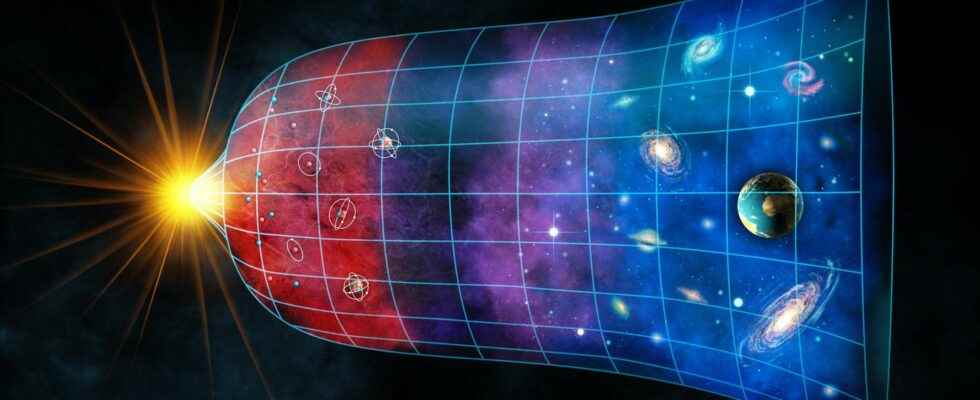In 1998, scientists discovered, through two parallel studies, that SN Ia-type supernovae were moving away from each other faster and faster. Those supernovaissues of binary systems containing a white dwarfare considered landmarks in cosmologyalso called standard candlesbecause their brightness remains constant over time. However, when the researchers evaluated the distance that separated them as a function of time, they observed that it increased more and more quickly as a function of time! We already knew at that time that theUniverse was expanding, but the model of the big Bang supposed a deceleration of this expansion: observations showed the opposite.
Dark energy of unknown origin occupies more than 70% of our Universe
The only explanation found for this phenomenon involved the presence of a pressure negative caused by an unknown substance. Named ” dark energy “, calculations have since shown that it fills more than 70% of the energy content of our Universe, without us being able to identify it. Undetectable despite numerous attempts, several theories have nevertheless tried to model it. The most widely used model today is standard cosmological modelwhich assumes constant acceleration and depends on the cosmological constant Λ, which represents vacuum energy. In this case, the acceleration is constant, so the expansion will continue indefinitely. But let’s look at another model, less known: it assumes a dynamic dark energy, that is to say variable over time.
More exactly, dark energy would be like a substance determined by a scalar field, called quintessence. Each point in space is associated with a value of this quintessence V(Φ), which depends on the energy density and matter which surrounds it. It then varies over time, and thus opposes the theory that associates dark energy with cosmological constant. Her wave length would be of the order of the size of the Universe, giving it almost zero kinetic energy. Since the pressure associated with the quintessence depends on the ratio between kinetic energy and potential energythis one is negative, therefore coherent with a repulsive energy.
Acceleration would become deceleration within a few million years
According to this model, the quintessence can interact with ordinary matter when it is in large quantities, such as a star system, or even bigger, a galaxy. Thus, at the very beginning of the Universe, when it was still compact, quintessence and matter would have interacted strongly, creating a kind of acceleration boom. Then as the stars move away, the density of matter decreases to become almost a constant, therefore the interaction with the quintessence too.
In a study published in the journal Proceedings of the National Academy of Sciences, a group of cosmologists explored the idea of quintessence. And their model predicts several changes for the expansion of the Universe: first, its acceleration will decelerate then stop soon, then instead of expanding the Universe will contract little by little. Their calculations assume a gradual increase in kinetic energy and a parallel decrease in potential energy: hence the evolution towards a positive pressure, which tends to contract the Universe instead of stretching it: “ as the positive potential energy density decreases and the kinetic energy density comes to exceed it, the current phase of accelerated expansion will end and transition smoothly into a period of decelerated expansion. Then, as the scalar field continues to scale down the potential, the potential energy density will become negative enough that the total energy density and hence the parameter of Hubble H
fs3
